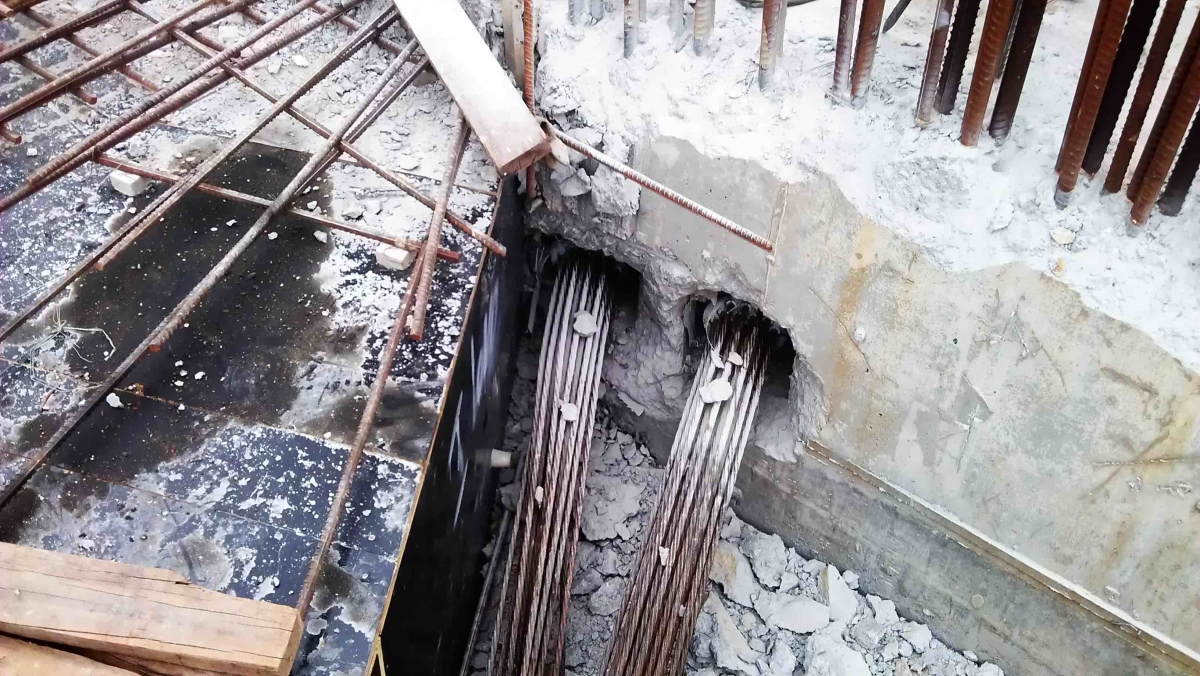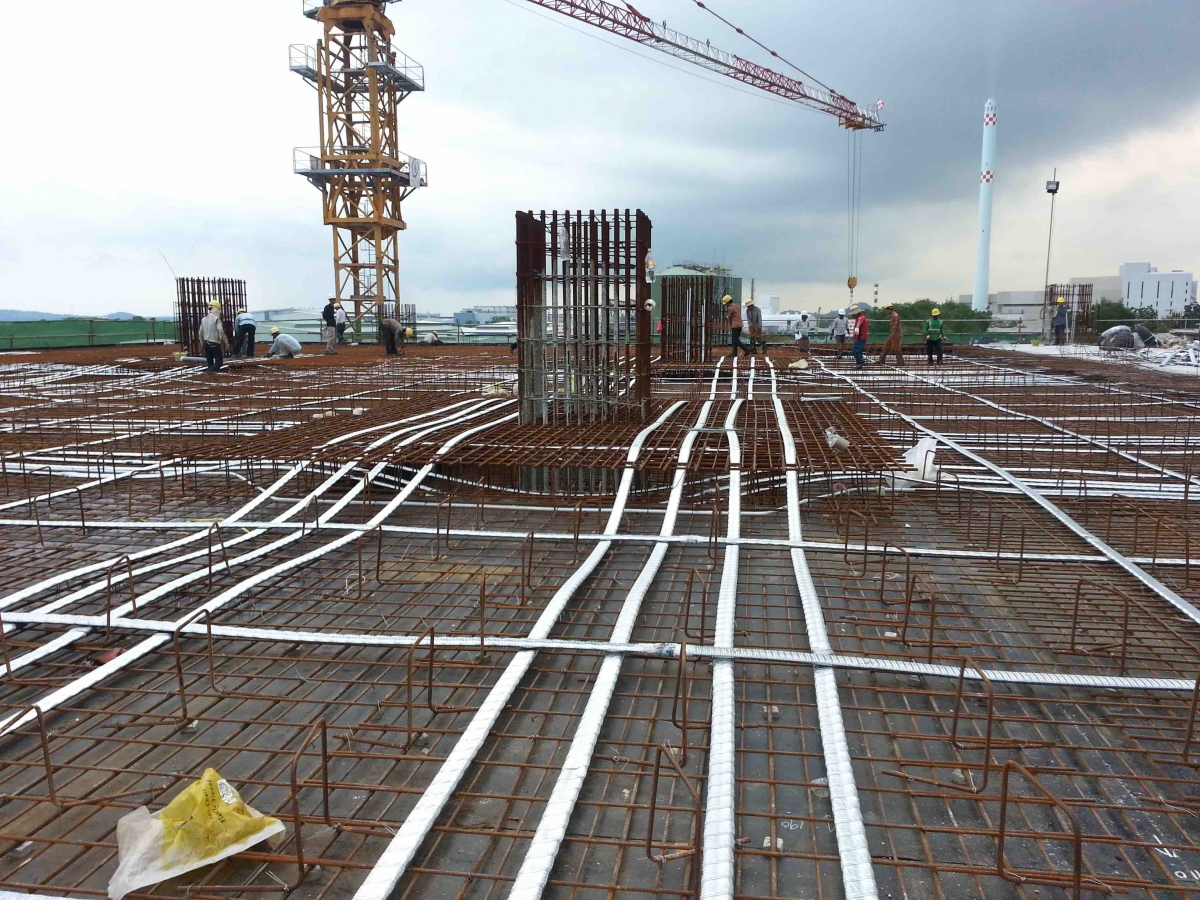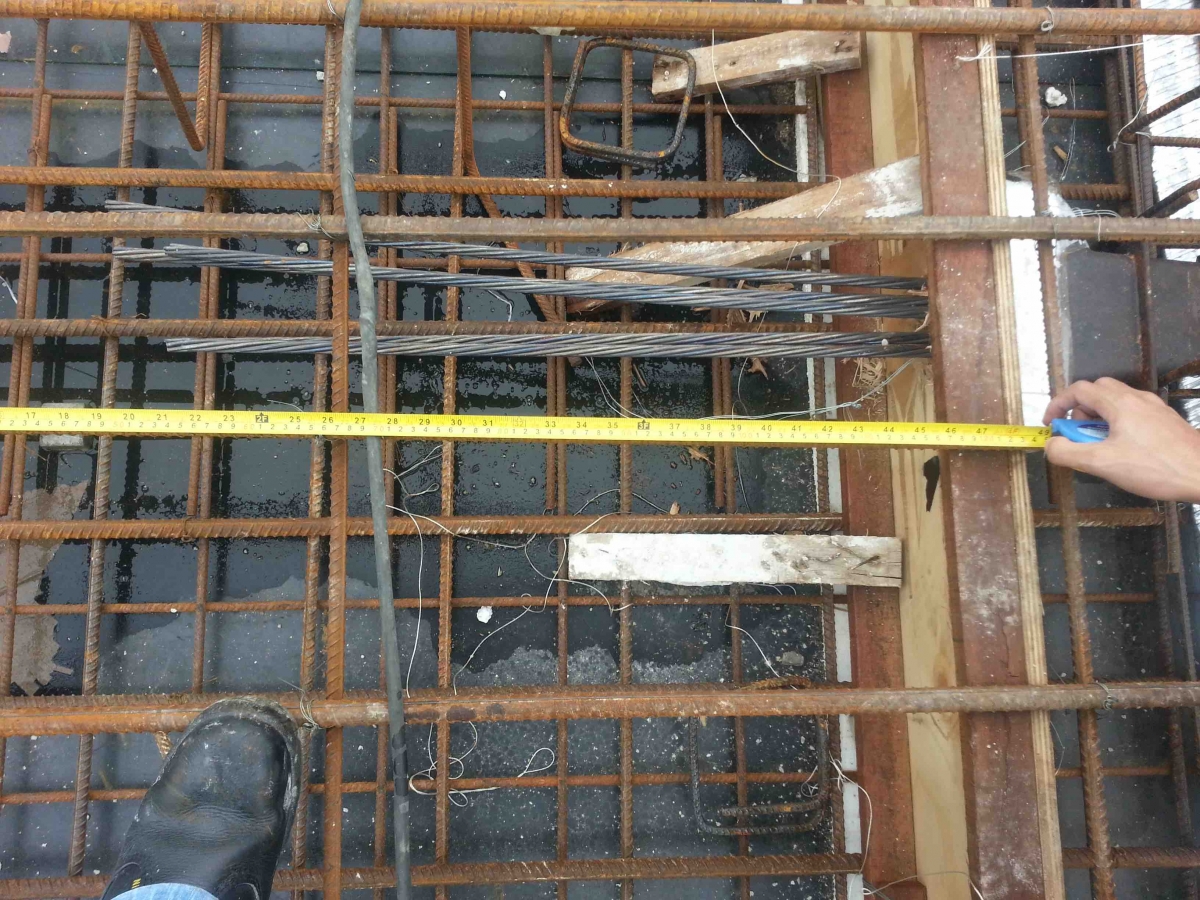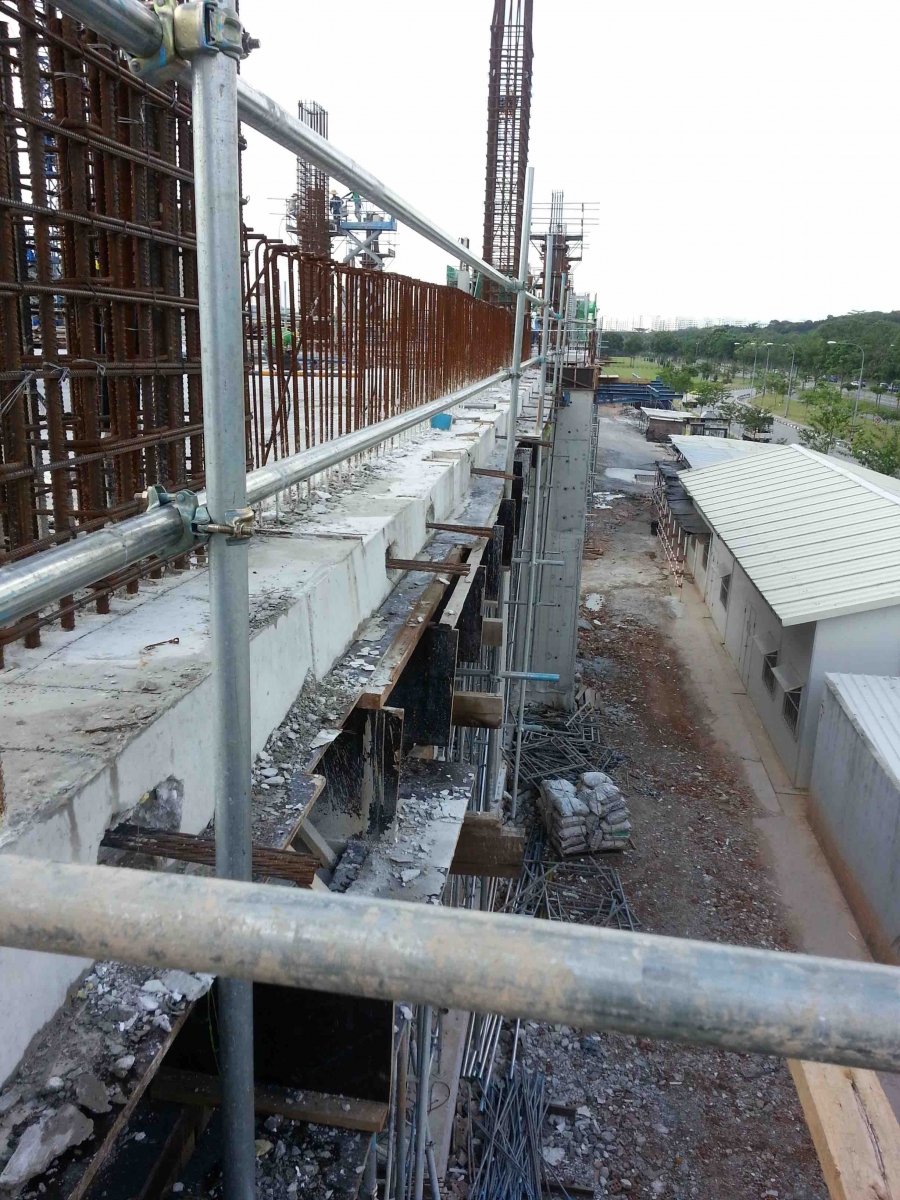Stressing Jack
Customized 100 metric ton Stressing Jack
In July 2015, we started to deliver a series of customized Stressing Jack to some precast concrete operators. This 100 metric ton Stressing Jack works on a 200mm length stroke and it is able to perform simultaneous stressing job on 4 PC strand spaced 50mm apart.
TMG successfully helped the operators to reduce up to 75% of their mapower cost and also increased the production cycle time. And this is a tremendous improvement on the overall work productivity and efficiency.
As TMG is specialized in all sorts of customization work, we are constantly working on more innovative and groundbreaking products. This will inevitably bring values and reduction in operation cost for our users, both on prestressing and post tensioning jobs.
The development of technology brought us many conveniences and also altered our tradional ways of running businesses. And TMG believes that by embracing and implementing appropriate adaptation with technology, we can remain relevant and also ahead of the changes in the prestressed concrete industry.
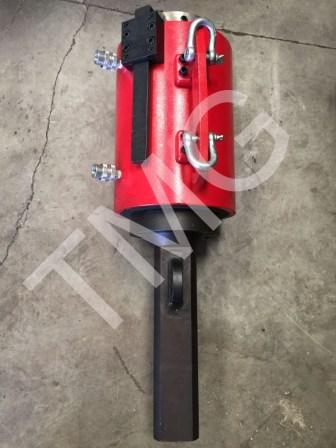
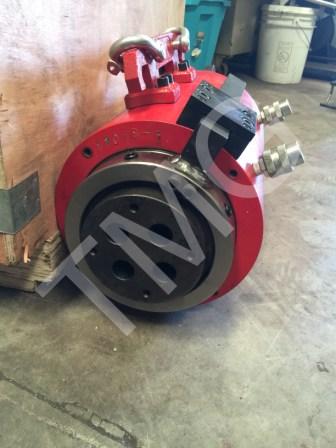
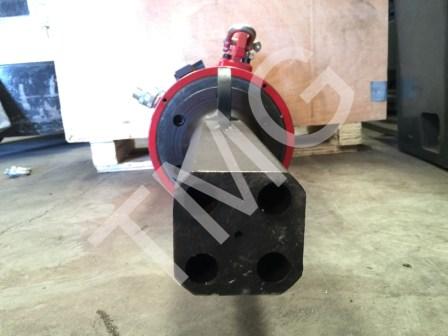
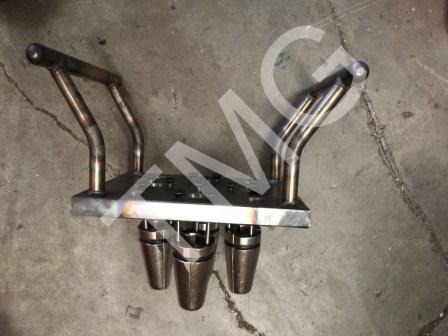
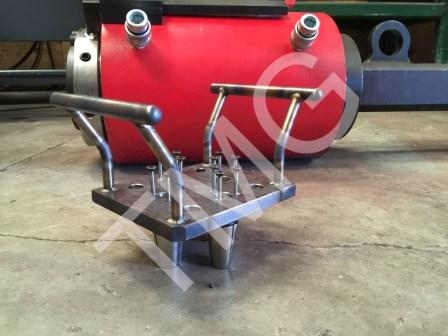
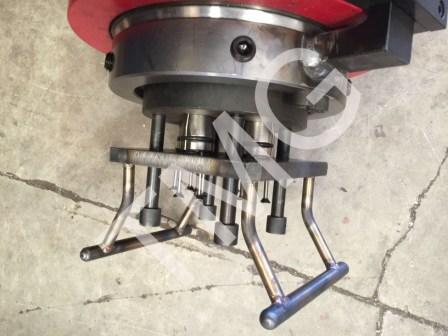
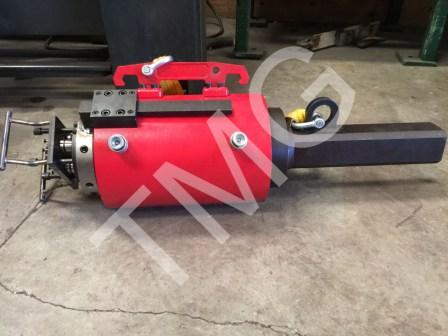
Bearing Plate is a very important element in a post tensioning system. It serve the purpose of transfering prestressing force derived from the tendon (tensile element, eg. PC strand) to the concrete. And it is precisely in this, that explains what we want to achieve in prestressed concrete structures, and thus we take a special interest on the Bearing Plate.
In our earlier blog post we shared on the testing we conducted on ‘Load Transfer and Static Load Test of Anchors in accordance to European Technical Approval (ETAG 013)’, we posted some photographs of Bearing Plate casted into concrete blocks for Load Transfer Test. Well, this is to test the ultimate load bearing capability of the Bearing Plate (by means of a Stressing Jack) under a real-life situation. As ETAG 013 specification clearly states under Load Transfer to the Structure; “Post Tensioning systems shall be able to transfer a specified percentage of the tensile element ultimate strength from the anchorage into the concrete structure, of a defined strength class of concrete, without undue cracking of the structure, and at deformations which stabilise within a given time frame”.
However, we are not going in-depth on this test procedure and result. Rather we are taking an interest on the manufacturing of the Bearing Plate. Bearing Plate is generally manufactured with ductile iron (eg, ASTM A536, Grade 80-55-06) or grey iron (eg, HT200, GB/T9439-2010), casted in a steel foundry. There are numerous ways in the production of Bearing Plate. From an automatic production line (eg, DISA) to a brick & mottar method of using moulds, very much like how we produce precast concrete products.
We take a particular interest in a method we are familiar with, and that is, the usage of polyfoam to bring our Bearing Plate to life!
The polyfoam is produced to the exact same shape and size as the actual Bearing Plate. And then a layer of clay is coated over the polyfoam to form an ‘temporary’ mould over it. Molten iron is then poured into this temporary mould through a small opening, and the polyfoam inside will then be burnt away. With the disappearance of the polyfoam, the molten iron will then filled up the temporary mould. Once the molten iron cools down and harden, the removal of the exterior clay will then give us the Bearing Plate we wanted.
We posted some photographs of our Bearing Plate production process and we hope this will provide some insights of our daily production activities.
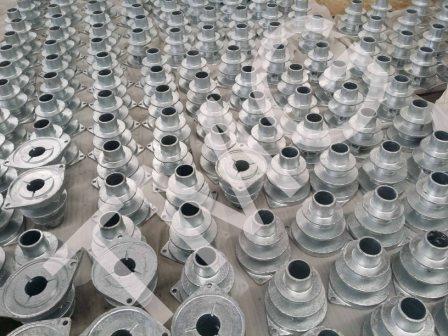
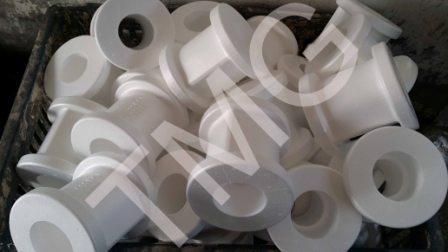
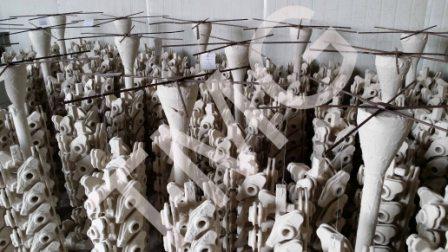
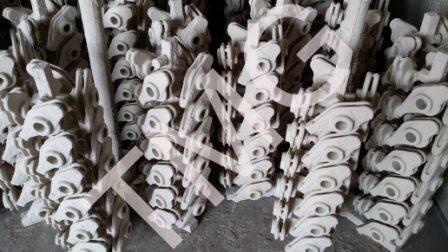
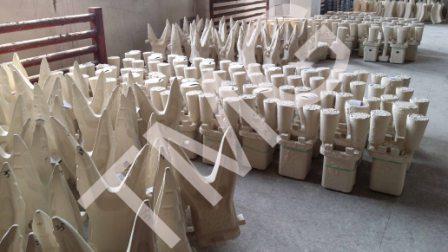
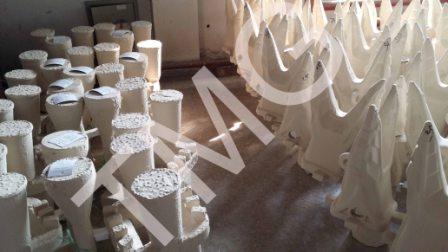
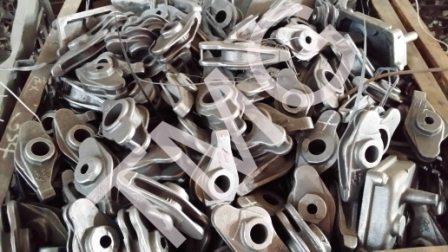
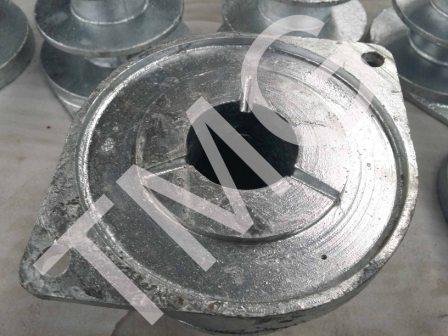
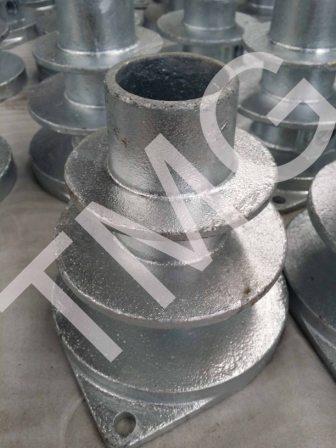
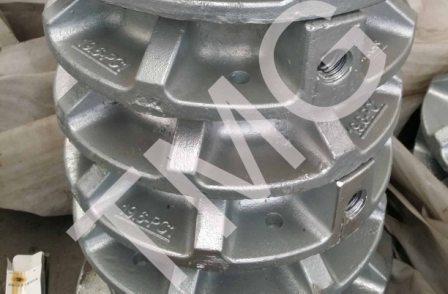
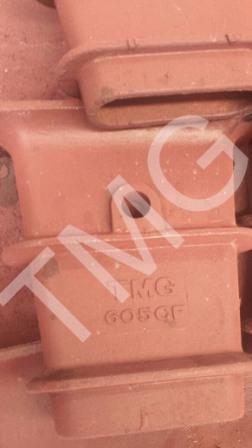
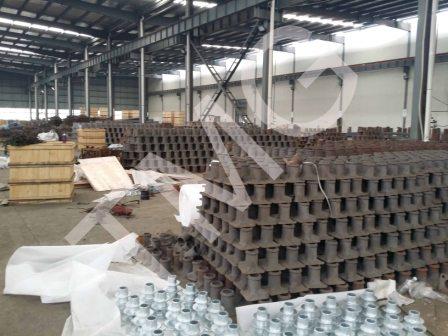
Steel Corrugated Duct for Bonded PT
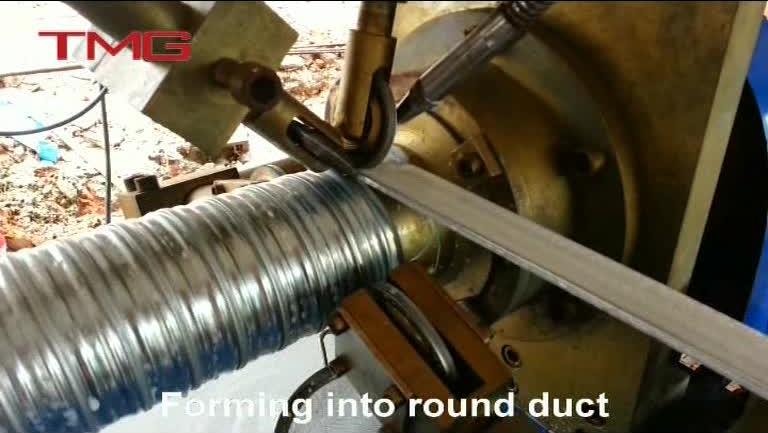
Duct is an important element for bonded post tensioning work. It is essential as it creates a void for the tendon or tensile element. By and large, steel corrugated duct provides the most economical solution to bonded post tensioning work.
Steel corrugated duct are manufactured from a long galvanized strip of steel, normally in the range of 0.25 – 0.40mm in thickness and can be 30 – 80mm in width. It depends on the type of duct forming machine used. These strips are then pressed into a corrugated form before they are fed into a turning wheel to make the edges interlock, and forming into a pipe. And in post tensioning terms, we call this pipe a ‘duct’. And duct can come in 2 types of shapes, round and flat. A steel corrugated flat duct is pressed into shape from a steel corrugated round duct and it is generally used for slab anchorage (not limited).
Duct plays a critical role in providing a corrosion protection environment to the tensile element or tendon (eg. PC Strand). And steel corrugated duct offers excellent bonding behaviour to tendon grout and also the concrete around it. And it is precisely because the duct is a protection to the tendon, its quality is paramount.
Due to the way the steel corrugated duct is produced, bad quality duct can cause huge problems like ‘bleeding’ during the construction process. Most of the time, it is the bad interlocking of the edges between adjacent strips that causes the duct to collapse under the weight of the concrete. This results the concrete to leak into the duct (term ‘bleeding’) and bond with the tendon even before stressing commence.
Operators are well aware of the repercussion bleeding can cause. During stressing, it causes the tendon elongation to fall under the required length even though the stressing jack and pump had worked to its required load. To sum it up, we call this prestressing lost (due to frictional effect). This is a situation everybody wants to avoid.
Duct is also available in plastic form, generally made of polyethylene / polypropylene material. Plastic duct has lesser bleeding issue and it is more commonly found in corrosive environment like waste water treatment tanks, acid tanks, silos etc. However steel corrugated duct is still the preferred choice for providing a homogenous environment to prestressed concrete structure, primarily due to its excellent bonding characteristic. And in some countries, plastic duct are barred because of fire safety regulation. This is because the burning of plastic during a fire hazard can emit poisonous gases and it is harmful to humans.
TMG visited a few project sites and with the blessing of the main contractors, we managed to film the process of steel corrugated duct production. The source of the duct forming machine remains unknown.
Anchor Head, Bearing Plate & Wedge Shipment
Recently, TMG delivered 8 containers of Anchor Head, Bearing Plate and Wedge for a project in South Asia. This project uses a mixture of slab anchors of 4 and 5 strand, and multistrand anchors of 3 to 19 strand. All supplied anchors are for 15.20mm strand size. As post tensioning is becoming more popular in developing countries, we are seeing an upward trend in prestressed concrete structure design.
Just 20 years ago, prestressing seems to be a taboo in these developing countries. Despite the fact that post tensioning can bring a lot of tangile benefits to the whole structure, developers and contractors are conservative in accepting the advantages that it can bring. Many were septical and conventional in the way they viewed civil construction. The growth and popularity of internet helped and transformed the development of post tensioning. With information now easily available over the internet, developers and consultants are more well informed and have better understanding of post tensioning. This information-age development also accelerated the transformation and acceptance of post tensioning, from an unfamilar technology to a widely accepted one today.
As market demand for post tensioning increases, the surge in post tensioning accessories supplies also effected the cost of carrying out such construction to be more transparent, thus bringing benefits to developers and contractors. Products like PC strand, Stressing Equipment (Stressing Jack, Pump, Grouting Machine etc), post tensioning accessories (Anchor Head, Bearing Plate, Wedge etc) become widely available and can be delivered with short lead-time.
Below are some photographs of TMG Anchor Head (before packaging) in our storage warehouse, ready for shipment.
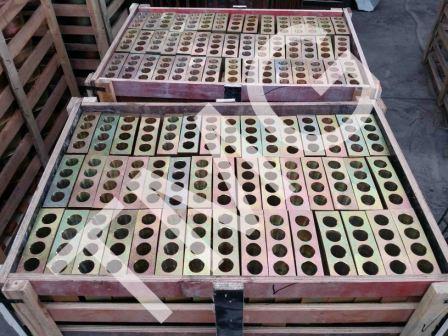
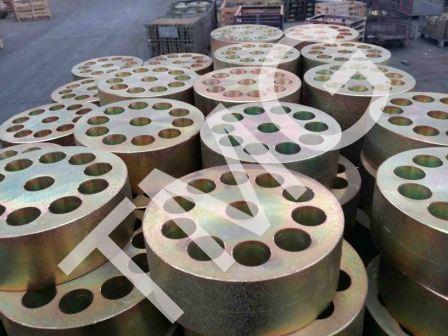
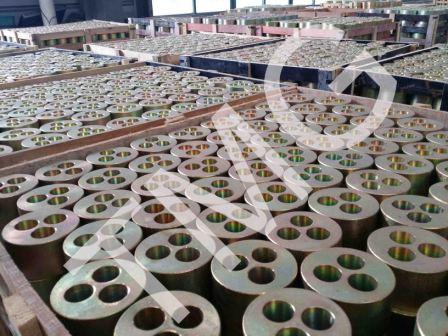
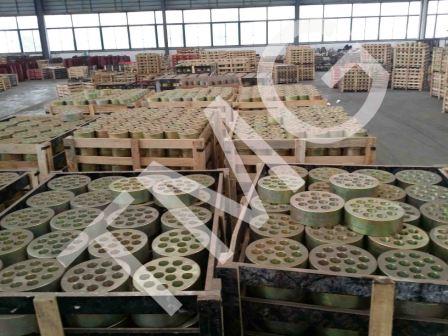
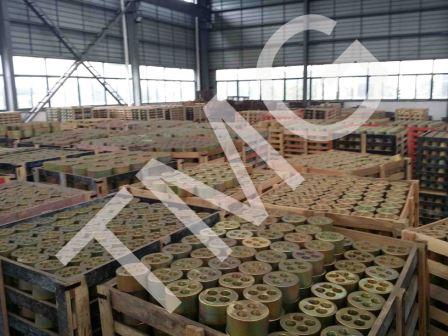
Singapore Prestige Class Awards 2014 – 2015
E-Force Engineering Pte Ltd, our longtime strategic business partner, was presented with Luminary Class Award during Singapore Prestige Class Awards 2014 – 2015 Ceremony in Shangri La Hotel on 9th April 2015.
E-Force is a specialist post tensioning company with presents in Singapore, South-East Asia and many parts of Middle East. They specialised in prestressed concrete structural works, primarily for buildings, logistic warehouses, parking facilities, and other special structures. Some of their prominent projects are; the largest mall (Safeer Mall), the biggest Islamic Mosque (Sheikh Zayed Islamic Centre) in Fujairah, as well as the largest resort development (Mina Al Fajer) in Dibba, United Arab Emirates. The prominent Al Hussain Tower in Olaya area, Riyadh, Kingdom of Saudi Arabia, is also one their many achievements.
E-Force’s deep understanding of prestressing work and diverse knowledge on structural works made them the preferred choice among the post tensioning specialists in many regions. And equipped with a complete range of Stressing Jack and other accessories, E-Force is ready to undertake any type of post tensioning works with its certified European Technical Approval (ETAG 013) system.
Having worked along with E-Force team of committed members since their establishment, TMG Global Pte Ltd is confident that E-Force will continuously bring benefits and values to the construction industry.
Moving ahead, TMG and E-Force is embarking on another milestone on Bridge Cable construction. We had seen the dramatic increase in Stay Cable demands over the last few years. And the dynamic requirements to these challenges prompted for more creative and ingenious solutions to meet these ever-changing demands. TMG had since developed a Compression Fitting Stay Cable System in view of this trend. Using the same working principle for anchorage with PC Wire, Compression Fitting Stay Cable System uses PC Strand to further increase the working and dynamic load. And this revolutionary innovation elevates further enhance the dynamism in Cable-stayed bridges.
Lastly, we wish E-Force Engineering Pte Ltd every success on their endeavouring path.

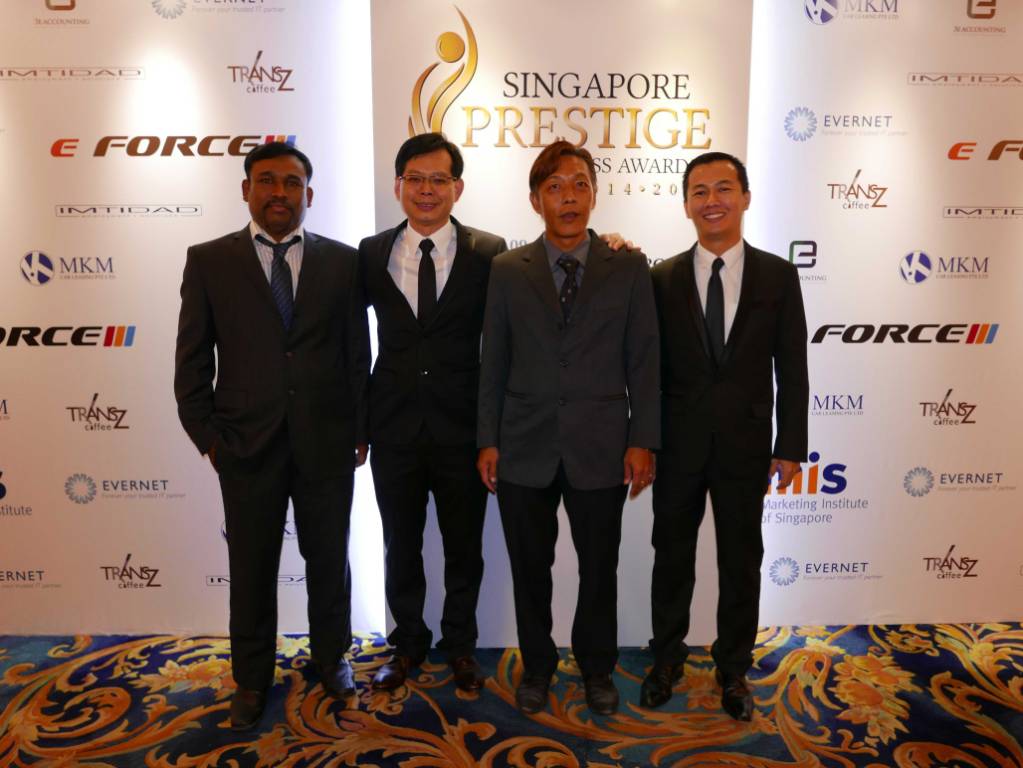
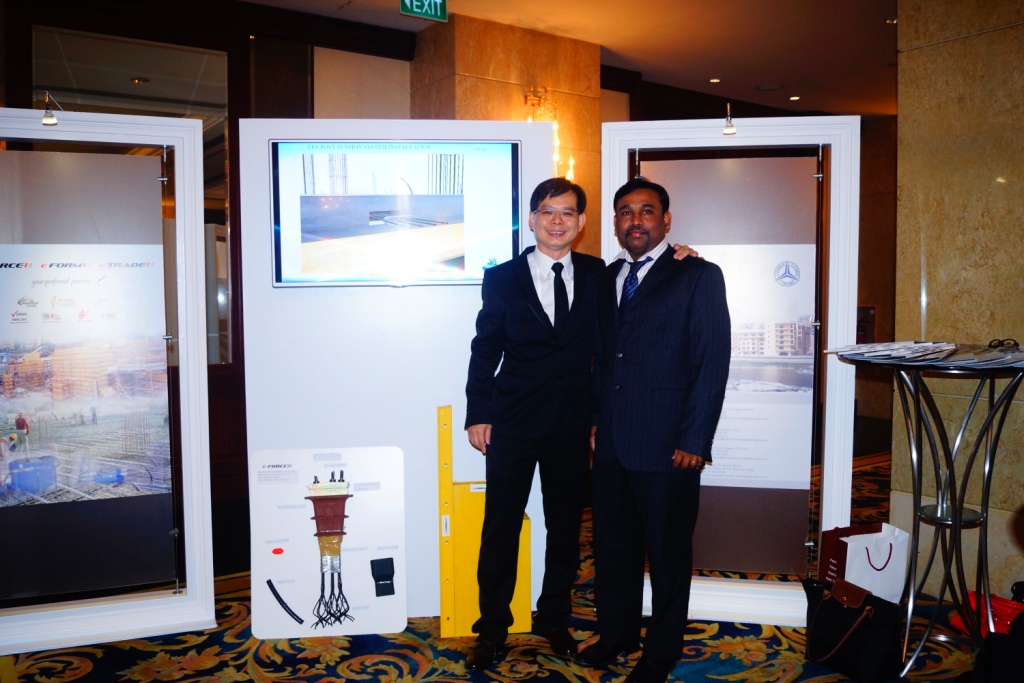
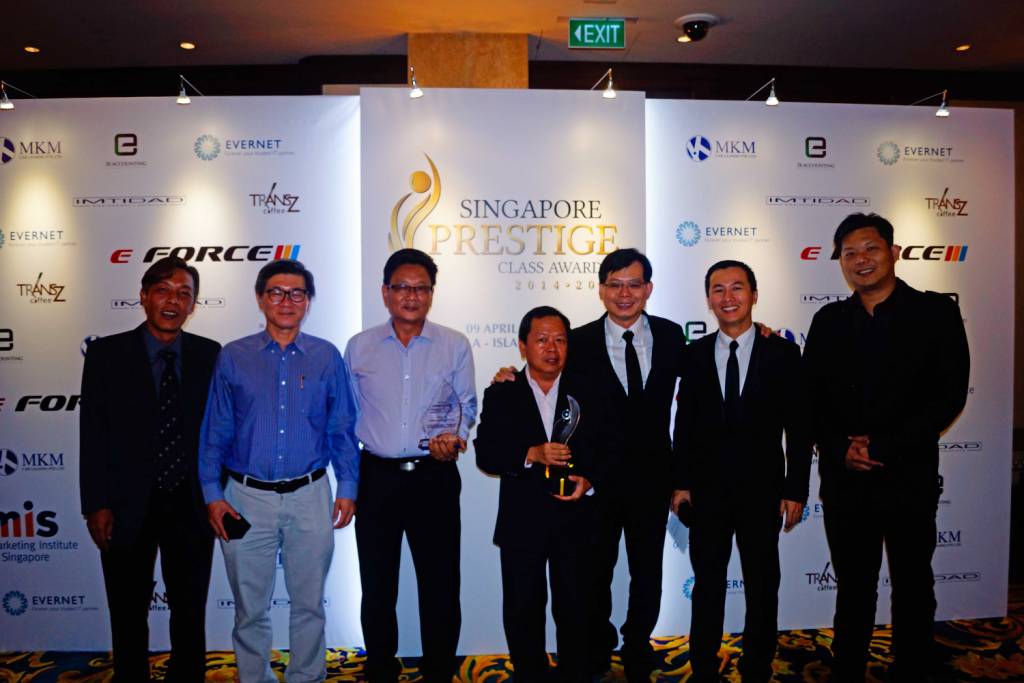
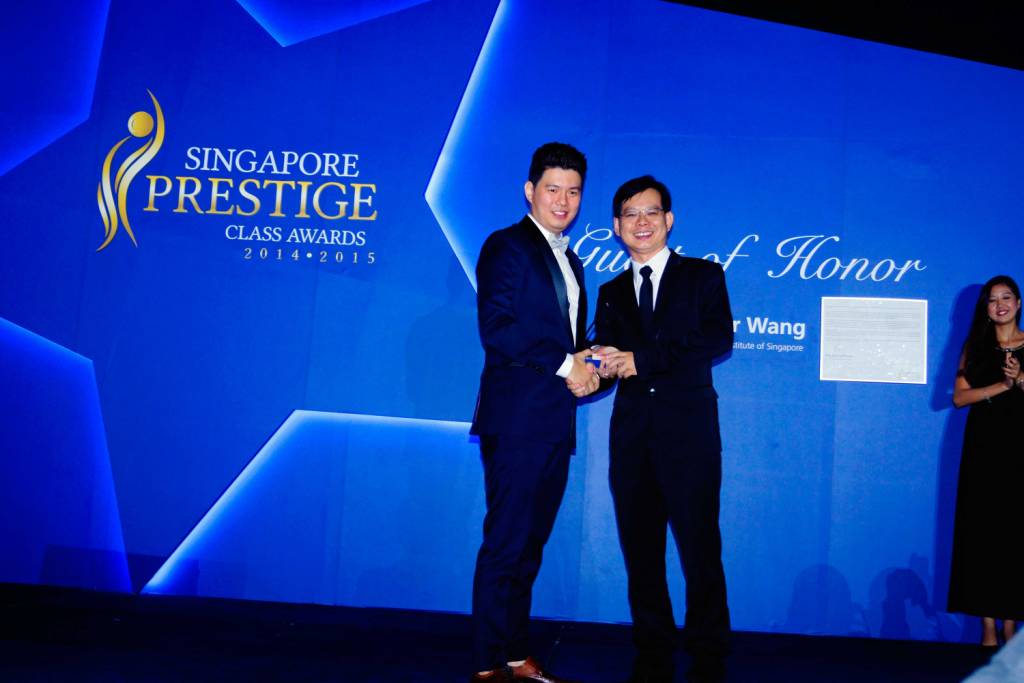
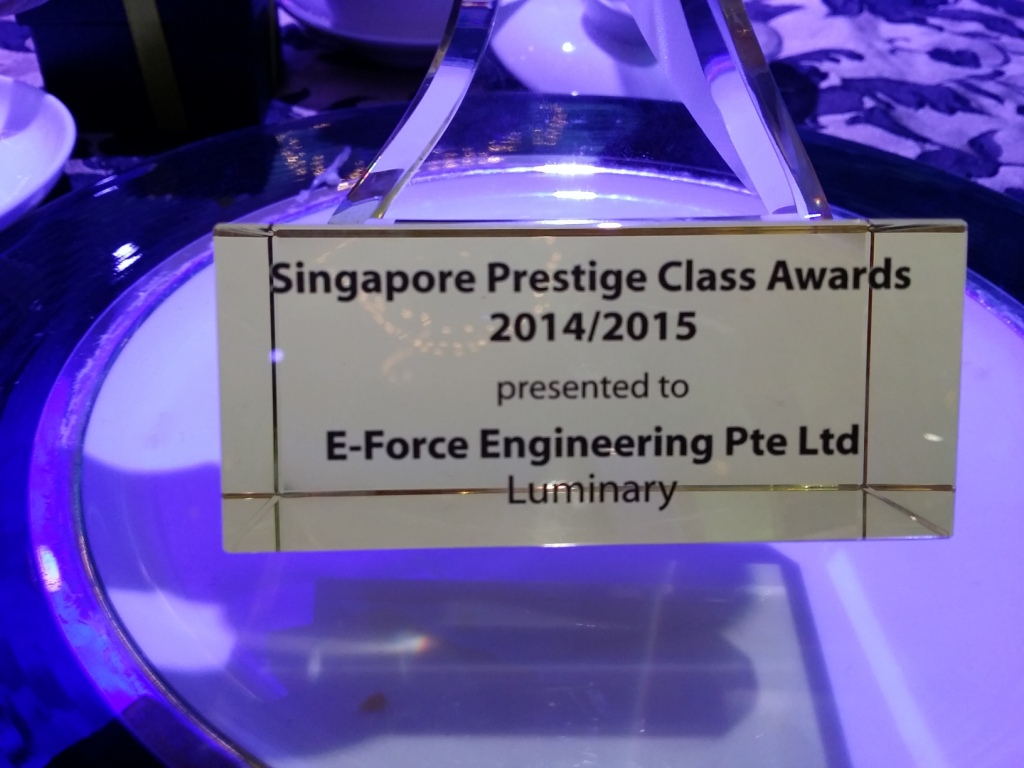
Stressing Jack is an essential part of post tensioning work. Working with light and versatile stressing tools enables site operators to increase stressing efficiency and productivity. TMG range of Stressing Jacks are designed and manufactured on such principles. We are capable of producing Stressing Jack with capacity from 50 to 1500 tons. And with its small, compact and highly efficient design, these Stressing Jack can operate in confined spaces. Besides that, TMG Stressing Jack can be mix-and-match with any types of anchor configurations. By matching both the Front & Back Plate of the Stressing Jack to corresponding anchor configurations, one Stressing Jack can accomplish the job of stressing a series of different types of anchors. This versatility frees up the additional work for site operator not having to use different Stressing Jacks for different anchors.
TMG Stressing Jack is also designed to be as short as possible. And this will reduce the amount of protruding PC Strand that is needed for prestressing work.
Build quality is also an important aspect of our Stressing Jack. TMG Stressing Equipment is known to be robust and durable, and this is one of the primary selection criteria for site operators as faulty equipment will cause safety concerns to both operators and prestressed concrete structures. And equipment down-time can also cause undesirable consequences to project schedule.
Building on these strong foundations, TMG is the preferred choice for customized Stressing Equipment. Below are some photos of customized Stressing Jacks that we manufactured and they are ready to be shipped to our clients.
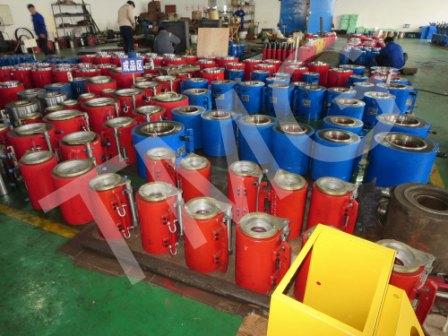
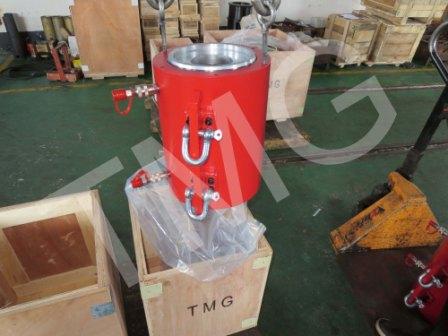
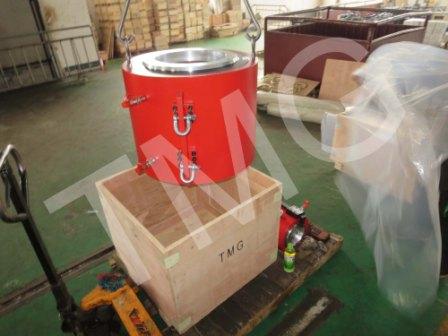
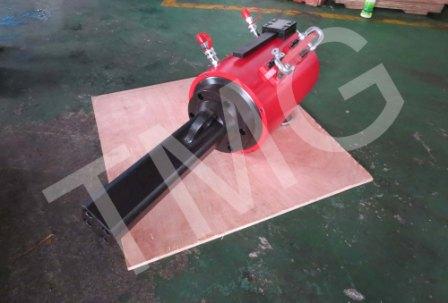
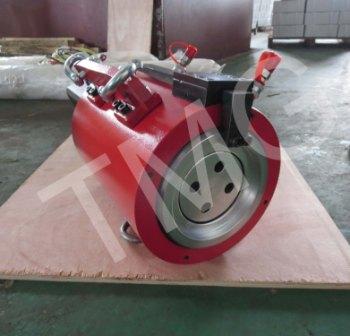
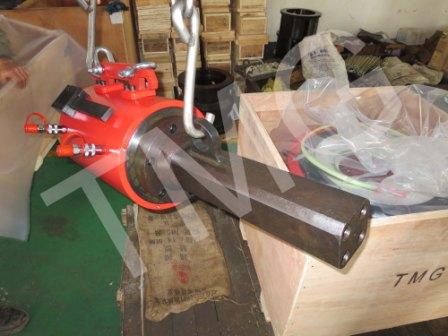
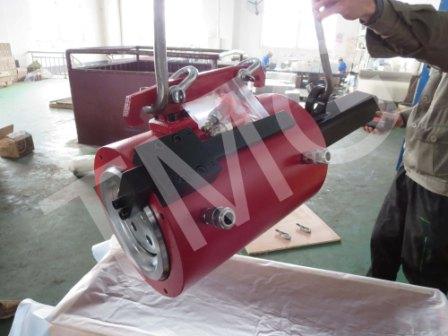
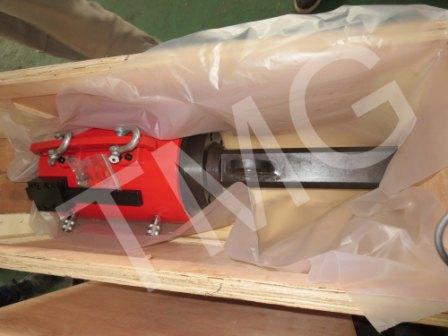
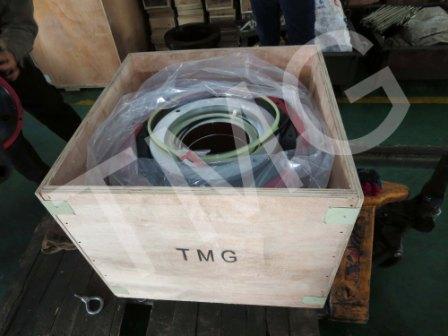
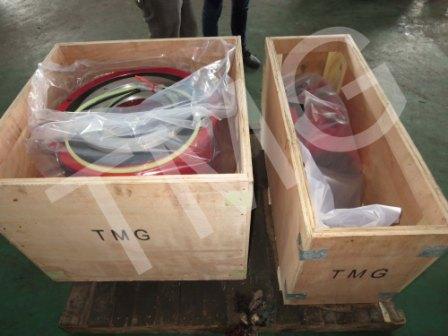
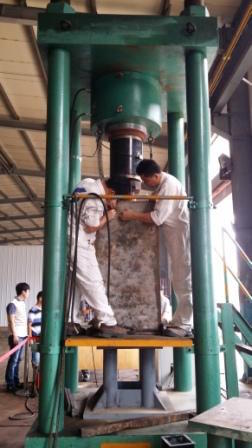
In July 2014, TMG Anchors were tested by Setsco Lab, an accredited international lab, on a series of anchors. 10 different types of Anchors were tested under Guidelines for European Technical Approval of Post-Tensioning Kits for Prestressing of Structures (ETAG 013) on Load Transfer and Static Load Test. These are the 10 different types of anchors chosen for the tests, with 5 types of anchors on 12.70mm PC Strand and 5 types of anchors on 15.20mm PC Strand.
12.70mm PC Strand
- Slab 4s & 5s
- Multistrand 12s, 19s & 31s
15.20mm PC Strand
- Slab 3s & 5s
- Multistrand 12s, 19s & 27s
Load Transfer Test
Post Tensioning systems shall be able to transfer a specified percentage of the tensile element (PC Strand) ultimate strength from the anchorage into the concrete structure, of a defined strength class of concrete, without undue cracking of the structure, and at deformations which stabilise within a given time frame.
The concrete test block shall be mounted in a calibrated test rig or testing machine. The load shall be applied to the concrete test block on an area which simulates the loading condition in a complete anchorage.
The load is increased in steps: 0.2 Fpk, 0.4 Fpk, 0.6 Fpk, and 0.8 Fpk (Fpk : Characteristic tensile strength of all PC Strand). After reaching the load 0.8 Fpk at least ten slow load cycles are to be performed, with 0.8 Fpk and 0.12 Fpk being the upper and the lower load limits, respectively. The necessary number of load cycles depends upon stabilisation of strain readings and crack widths. Following cyclic loading, the specimen shall be loaded continuously to failure.
During cyclic loading measurements shall be taken at the upper and lower loads of several cycles in order to decide whether satisfactory stabilisation of strains and widths of cracks is being attained. Cyclic loading shall be continued to n cycles until stabilisation is satisfactory.
Static Load Test
Post Tensioning systems shall be able to develop a specified percentage of the tensile element (PC Strand) ultimate strength with a minimum elongation, without premature failure of anchorage components, without undue deformations in the components, and without disproportionate relative movements between PC Strand and anchorage components.
The tendon specimen is mounted in the test rig or testing machine, observing the same geometrical configuration of the individual tensile elements in the specimen to that specified in the ETA applicant’s guide.The tendon is stressed at one end with representative equipment (Stressing Jack) comparable to the one used on construction site, and specified in the ETA applicant’s guide, in steps corresponding to 20%, 40%, 60% and 80% of the characteristic tensile strength of the tensile elements (PC Strand). The load is increased at a constant rate corresponding to about 100 MPa per minute. At 80% level, the load is transferred from the equipment to the anchorage and test rig. It is then held constant at 80% level for one and two hours for internal and external tendons, respectively. For external tendons, the load is then reduced to 20% level. Subsequently, the load is gradually increased for both tendon types with the test rig to failure at a maximum strain rate of 0.002 per minute.
The uncertainty of values measured with the measuring equipment shall be within +1%. Loads shall be maintained with a maximum tolerance of +2%. The load measured in the Stressing Jack shall be adjusted for estimated friction losses in the anchorages to assure that the specified load has been applied to the anchor head used for measurement.
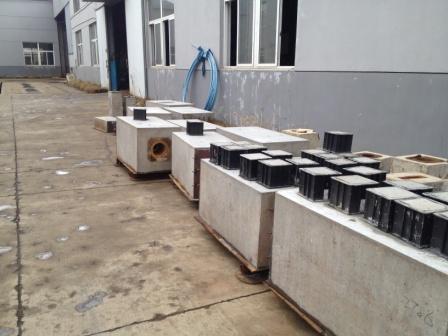
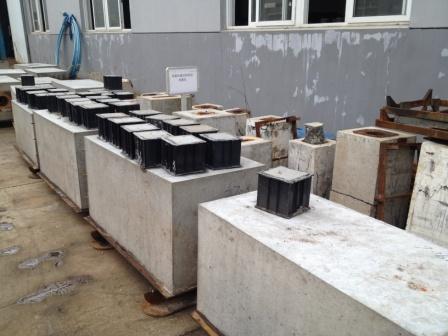
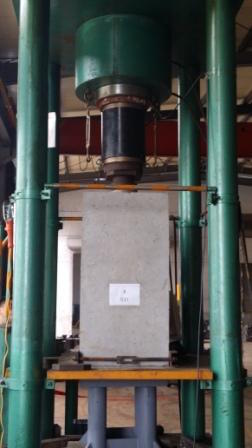
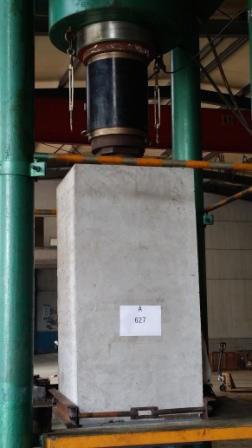

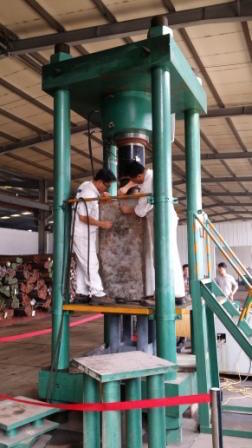
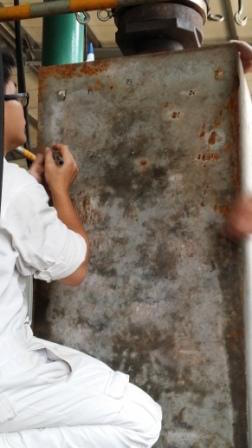
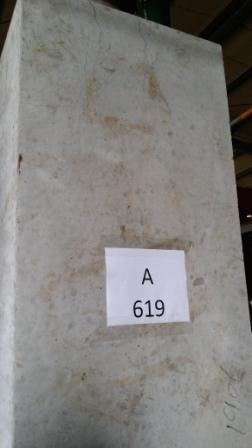
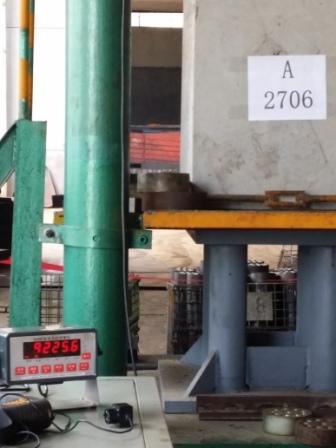
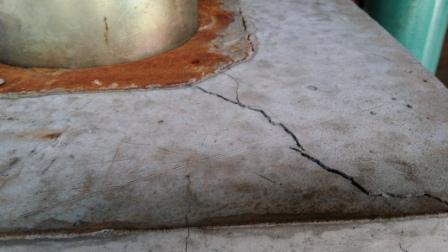
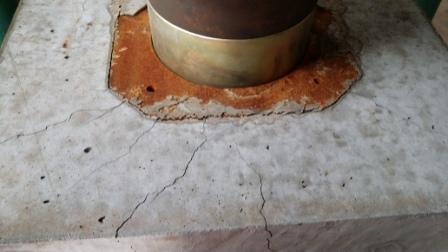
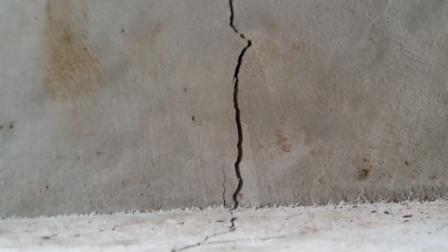
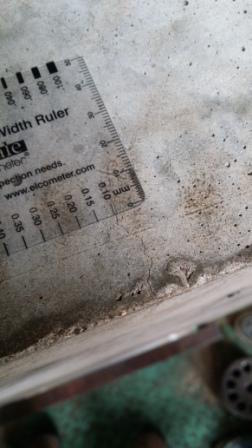
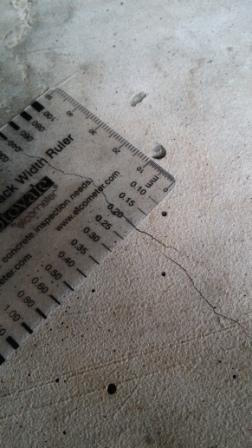
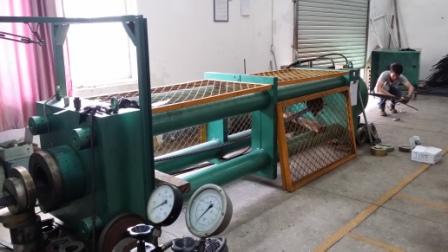
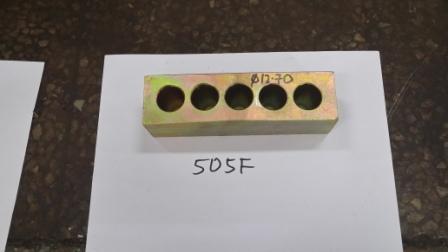
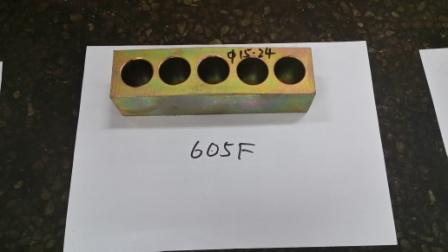
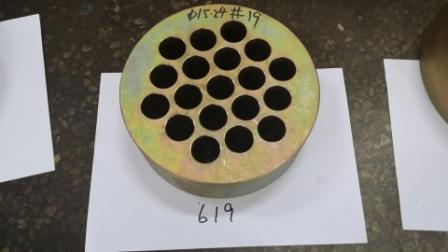
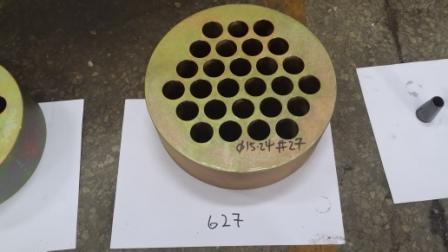
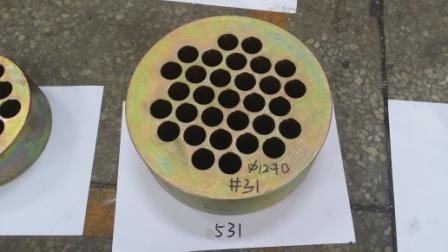
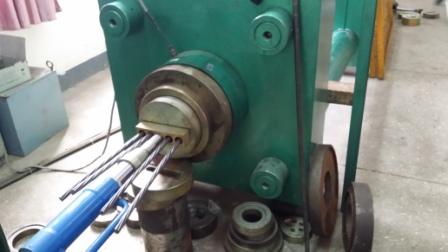
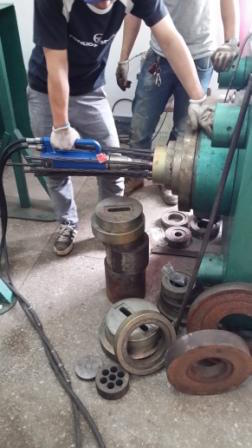
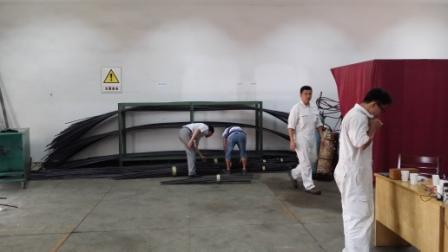
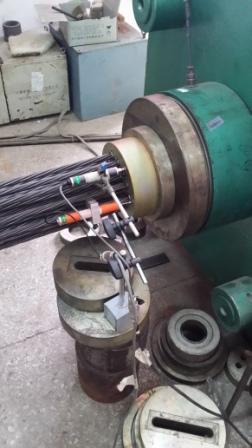
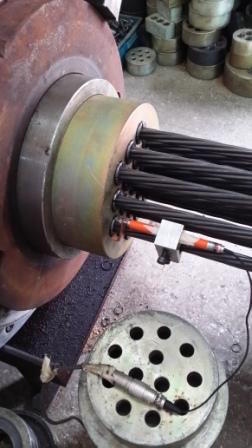
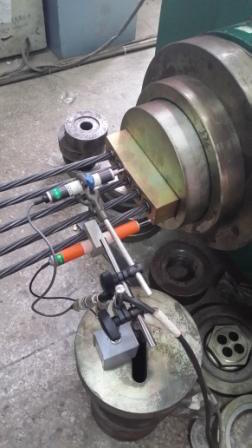
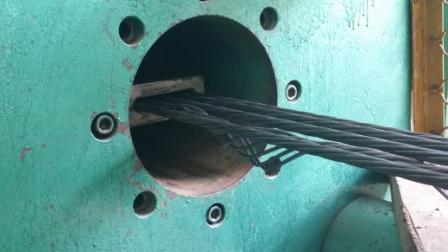
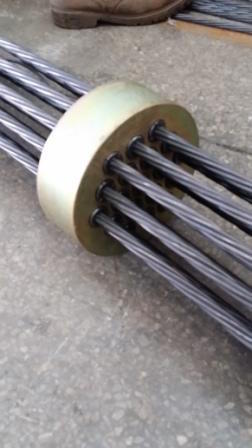
Post Tensioning of Building Slab
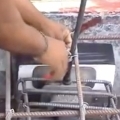
This is a good video showing step-by-step procedure of a building post tensioning slab. These are some of the main steps shown in this video.
- PC Strand preparation, into a uncoiler.
- Cutting the PC strand into desired length and pack them according to tendon size / configuration.
- Forming Fixed Anchors (Dead End) with the use of a Bond Head Machine.
- Positioning the Anchors on formwork with pocket former.
- Installation of galvanised steel duct and Bursting Reinforcement.
- Stranding.
- Securing the Fixed Anchors.
- Positioning of Bar Chairs to achieve desired tendon profile.
- Installation of Grout Vents to tendon.
- Concreting.
- Removing pocket former and installing of Anchor Head & Wedge in preparation for Stressing.
- Marking of PC Strand length for elongation reading (after stressing).
- Stressing using hydraulic Mono Stressing Jack.
- Checking for desired PC Strand elongation.
- Removing excess PC Strand and covering up recess pocket.
- Preparation of Grout material.
- Grouting of tendon and job completion.
Post Tensioning for Building Slab & Beam
These are some site photos contributed by E-Force Engineering for a mixed development project in the western part of Singapore. Post tensioning was carried out for the prestressed concrete structure. Flat Anchors of 3 - 5 x 12.70mm PC strand were used for the slab post tensioning, and multistrand Anchors of 19 x 12.70mm PC strand were used for the beam post tensioning. Both Mono Jack and 300 ton Stressing Jack were used in this project.
